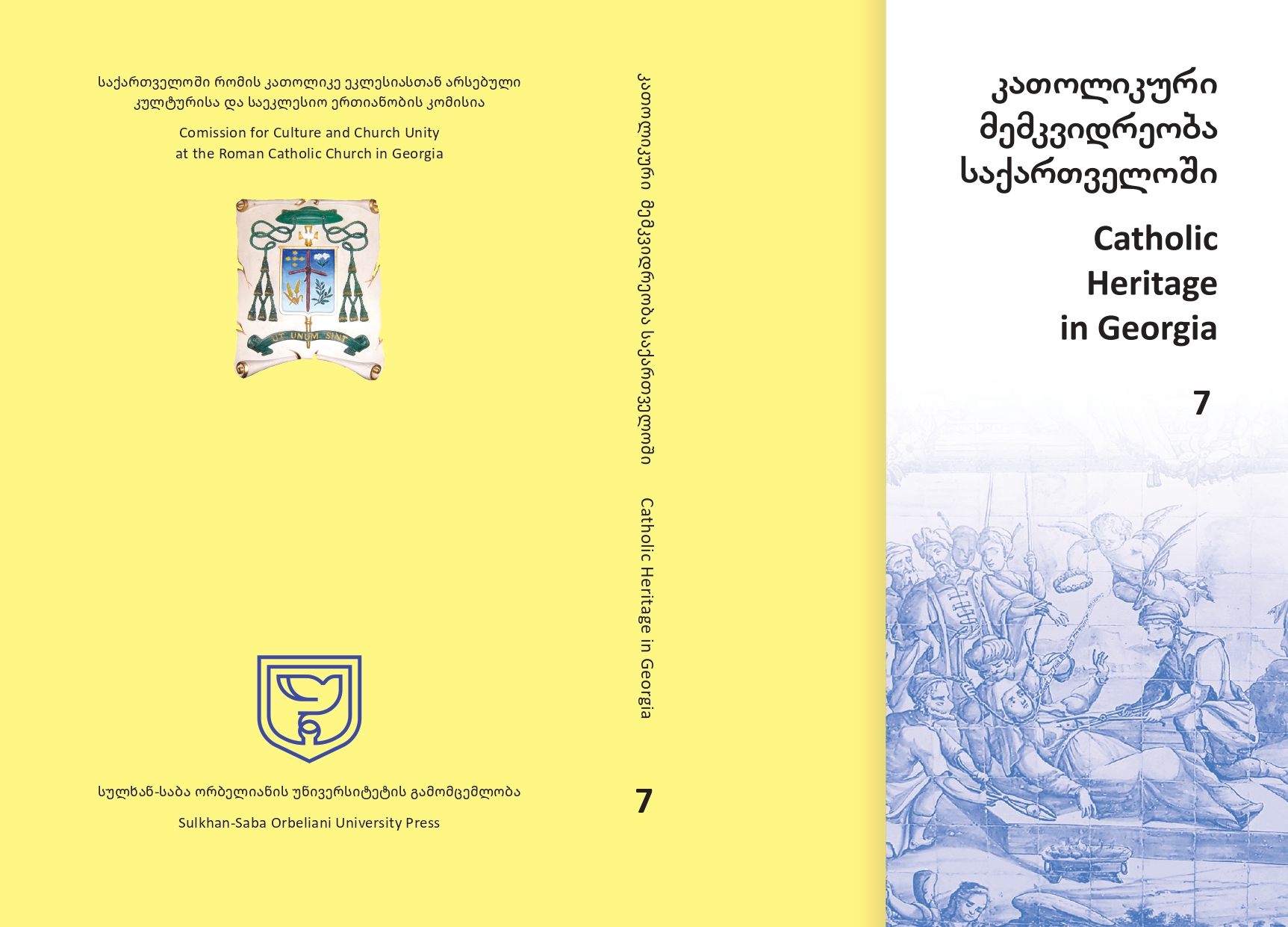The Martyrdom of St. Queen Ketevan through the Poetic Vision of Sulkhan-Saba Orbeliani
DOI:
https://doi.org/10.52340/chg.2024.07.06Abstract
The poem recounting the martyrdom of Queen Ketevan was composed by her son, King Teimuraz I (1589-1663), between 1627 and 1628. „The Torture and Book of Queen Ketevan“ presents a historical account of the final period in the life of the Queen of Kakheti – Saint Ketevan (1560-1624) – chronicling her torture and unwavering dedication to the Christian faith. As a later addition to the original poem, three stanzas written by Sulkhan-Saba Orbeliani are incorporated, which directly depict Ketevan’s suffering. However, unlike Teimuraz’s original and predominantly realistic narrative, Orbeliani emphasizes the spiritual and aesthetic dimensions of the
queen’s torture from the outset. This distinctive vision stems from a profound understanding of the religious significance of the martyrdom itself. Orbeliani transforms the depiction of torture into an act of beautification, presenting the martyr’s suffering as perfect adornment that enhances bodily beauty. The torture loses its tragic content as the poet reimagines it through the metaphor of a queen standing before a mirror, beautifying her face and body. From Sulkhan-Saba Orbeliani’s Christian perspective, true beauty emerges when an individual presents themselves before God in spiritual perfection. The saint who sacrifices their body in faithfulness to the Christian faith represents the highest form of beauty. This study examines how Orbeliani’s poetic intervention reframes the narrative of martyrdom, transforming physical suffering into spiritual transcendence and aesthetic perfection.








